
7 Essential Tips to Spruce Up Your Lawn This Winter
Published: 01/10/2024 | Updated: 29/09/2024
Key Highlights
- Preparing your lawn for winter is crucial for its health and ensures a vibrant green lawn come spring.
- Even though your lawn might appear dormant, taking care of it during winter sets the stage for a healthier and more resilient lawn in the warmer months.
- This guide provides easy-to-follow tips—from adjusting mowing heights to strategic fertilization – to keep your lawn looking its best throughout the colder months!
- Discover the importance of aeration and overseeding for optimal lawn health.
- Learn how to combat winter weeds and maintain proper moisture levels.
- By following these tips, you can enjoy a beautiful, healthy lawn year-round!
Introduction
While winter may provide a reprieve from the demanding upkeep of summer lawn care, it doesn't signify neglecting our outdoor spaces. Just like us, lawns require attention during the colder months. Despite appearing dormant in winter, this period is crucial for maintaining a healthy and lush lawn for the upcoming spring season.


By investing time and effort into winter lawn care, you set the foundation for a vibrant and resilient lawn that will thrive when spring arrives.
7 Vital Tips to Enhance Your Lawn This Winter
Caring for your lawn in winter is a smart investment that will pay off when the warm weather returns. Although it may appear dormant during the colder months, providing proper care during this period is crucial for maintaining its health and vibrancy.
One key aspect of winter lawn care is adjusting your mowing routine to accommodate the slower growth rate of the grass. By keeping the grass slightly longer than usual, you can help protect it from frost and potential damage. Additionally, ensuring that your lawn receives adequate nutrients, such as fertilizer rich in potassium, can help strengthen the roots and prepare it for the upcoming growing season.
In addition to mowing and fertilizing, there are several other simple yet effective tips to keep your lawn thriving during winter. For instance, removing debris like fallen leaves can prevent suffocation and mold growth on the grass. Aerating the soil allows better absorption of water and nutrients, while overseeding bare patches can help fill in any sparse areas.
Furthermore, staying mindful of foot traffic on the lawn, especially when it's frozen or wet, can prevent compaction and damage to the grass blades. Applying a layer of mulch over delicate plants or shrubs near the lawn can offer protection from frost and harsh weather conditions.
By following these seven easy tips for winter lawn care, you can ensure that your lawn remains healthy and resilient throughout the colder months, setting the stage for lush growth when spring arrives.
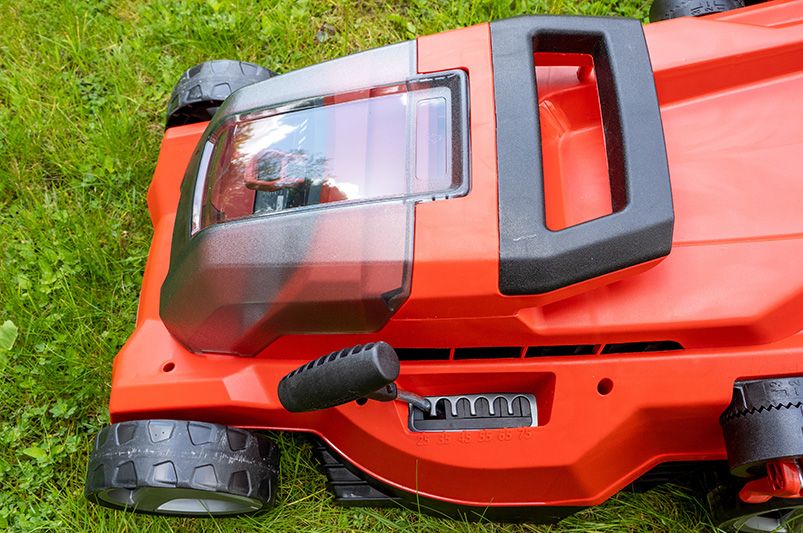
1. Adjust Your Mowing Height for the Season
During the cooler months, it is important to adjust your grass cutting routine to ensure the health of your lawn. As winter approaches, gradually reduce the height at which you mow your grass. This practice helps protect the grass roots from the harsh winter conditions. By maintaining slightly taller grass, you provide more insulation and room for sunlight absorption, enabling the grass to store additional energy for a robust growth comeback in the spring.
Avoid mowing your lawn when the grass is frosty or covered in snow. Mowing under these conditions can damage the grass blades and impede their ability to recover effectively. It's best to wait until the frost has melted or the snow has cleared before resuming your lawn maintenance routine.
In addition to adjusting the cutting height, consider sharpening your mower blades regularly during this period. Sharp blades make cleaner cuts, reducing stress on the grass and promoting healthier regrowth. Furthermore, remember to clear any fallen leaves or debris from the lawn to prevent suffocation and allow proper air circulation.
By following these winter lawn care tips, you can help ensure that your grass remains healthy and vibrant throughout the colder months, ready to thrive when spring arrives.
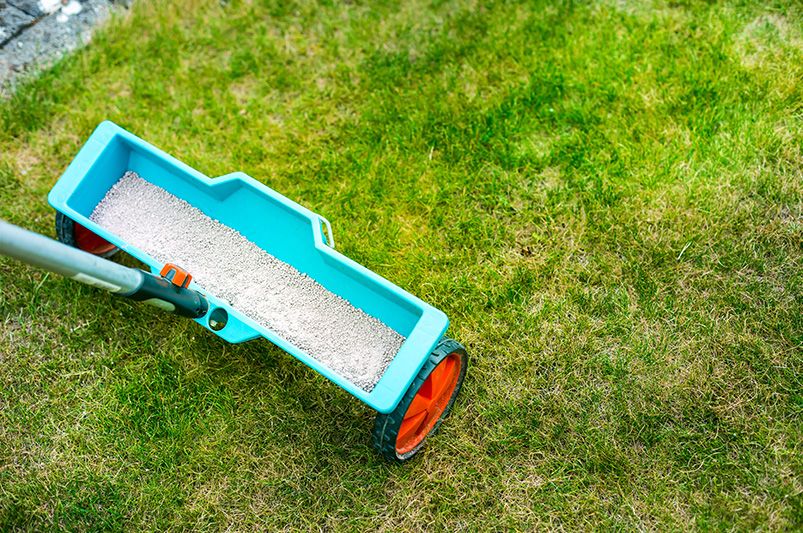
2. Fertilize to Prepare for Cold Months
Fertilizing your lawn in the fall is a beneficial practice that can significantly improve the health and resilience of your grass. By using a specialized fall fertilizer, you can provide essential nutrients to your lawn as it prepares for the dormant winter months.
Potassium-rich fertilizers are particularly advantageous as they promote stronger grass growth, enhancing its ability to withstand cold temperatures, diseases, and pests. Opting for slow-release fertilizers is also recommended since they supply nutrients gradually during the fall season and into winter, ensuring continuous nourishment for your lawn.
For those environmentally conscious individuals, natural fertilizers made from organic materials offer an eco-friendly alternative. These products not only feed your grass but also enhance soil quality over time, fostering healthier and more robust grass growth. Consider incorporating natural fertilizers into your lawn care routine to promote sustainable practices and long-term lawn health.
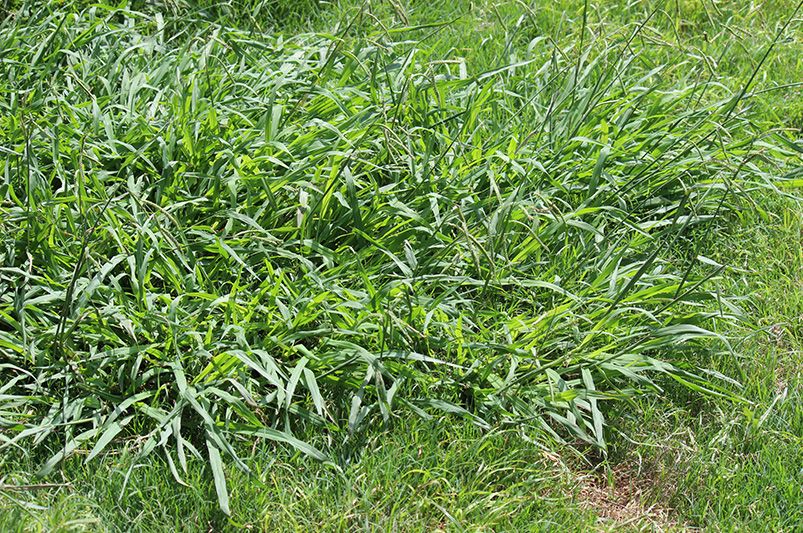
3. Weed Control: Tackle Winter Weeds Early
Winter is a season notorious for the emergence of pesky weeds such as dandelions and chickweed, particularly in areas with sparse vegetation. To prevent these weeds from establishing themselves, it is crucial to take proactive measures early on.
Implementing effective weed control strategies during the winter months can help maintain the health and appearance of your lawn:
- Application of pre-emergent herbicides in early fall: By using pre-emergent herbicides before winter sets in, you can prevent weed seeds from germinating and taking root in your lawn.
- Manual removal of visible weeds: Regularly inspecting your lawn and manually pulling out any visible weeds can prevent them from spreading and competing with your grass for essential nutrients.
- Utilization of post-emergent herbicides: In cases where weeds have already sprouted, employing post-emergent herbicides can target and eliminate existing weed growth effectively.
Taking swift action against these unwelcome intruders ensures that they do not deprive your grass of vital nutrients and space needed for healthy growth. By staying vigilant and employing a combination of preventive measures and targeted treatments, you can keep your lawn free from invasive weeds throughout the winter season.
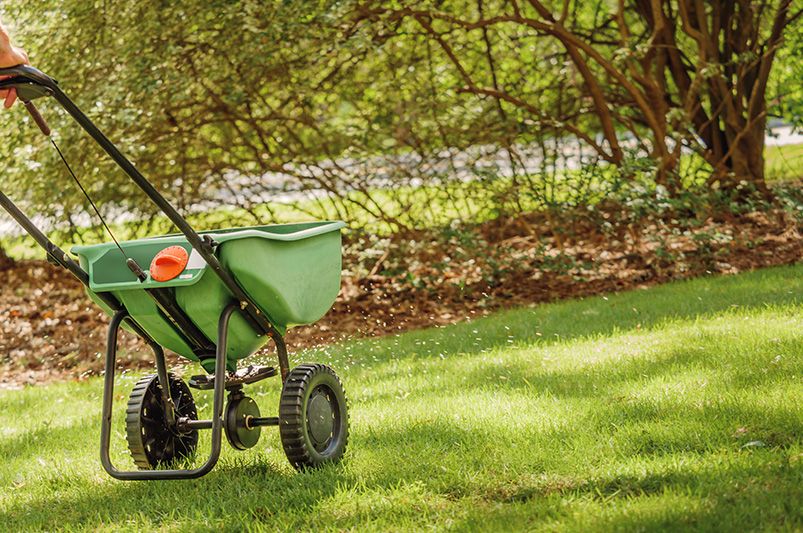
4. Overseed to Repair and Improve Lawn Density
Overseeding is a highly effective method for improving the density and overall health of a sparse lawn. Optimal timing for overseeding is during the fall season when temperatures are cooler, and moisture levels are abundant, providing ideal conditions for grass seed germination.
Selecting grass seed varieties that are well-suited to your specific region and the amount of sunlight your lawn receives is crucial for successful overseeding. Perennial ryegrass is a popular choice due to its resilience and rapid growth, particularly well-suited for cooler weather conditions.
Prior to overseeding, it is essential to properly prepare the soil by raking and aerating it. These steps ensure that the grass seeds make good contact with the soil, promoting better germination rates and ultimately leading to a thicker, healthier lawn. Additionally, applying a high-quality starter fertilizer can provide essential nutrients for the newly planted grass seeds to thrive and establish strong root systems.
Regular watering is also key in helping the newly sown grass seeds take root and flourish. Ensuring consistent moisture levels in the soil will support healthy growth and development of the new grass plants. Monitoring the progress of the overseeding process and making adjustments as needed will help achieve optimal results in transforming your lawn into a lush, vibrant landscape.
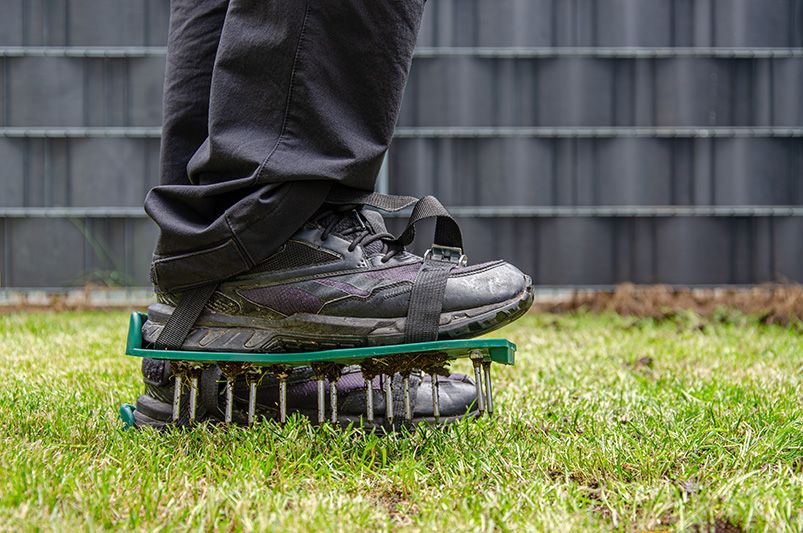
5. Aerate Your Lawn for Better Water and Nutrient Flow
Soil compaction is a common issue that arises from foot traffic, mowing, and general use over time. When the soil becomes compacted, it restricts the flow of water, air, and essential nutrients to reach the grass roots effectively. Aeration is a fundamental solution to combat this problem.
Aeration involves the process of creating small holes in the soil, allowing better penetration of water and vital nutrients to the root system. This practice not only facilitates improved nutrient absorption but also encourages deeper root growth. As the roots penetrate deeper into the soil, they become more resilient and establish a stronger foundation for a healthier and lusher lawn.
There are various methods of aeration available, including core aeration and spike aeration, each offering unique benefits depending on the specific needs of the lawn. Core aeration involves removing small plugs of soil from the ground, while spike aeration punctures holes into the soil without extracting any material. Both techniques can effectively alleviate soil compaction and promote optimal grass growth.
It is recommended to aerate your lawn at least once a year, typically during the growing season when the grass can quickly recover from the process. By incorporating regular aeration into your lawn care routine, you can enhance the overall health and appearance of your turf by ensuring that it receives adequate oxygen, water, and nutrients for sustained vitality.
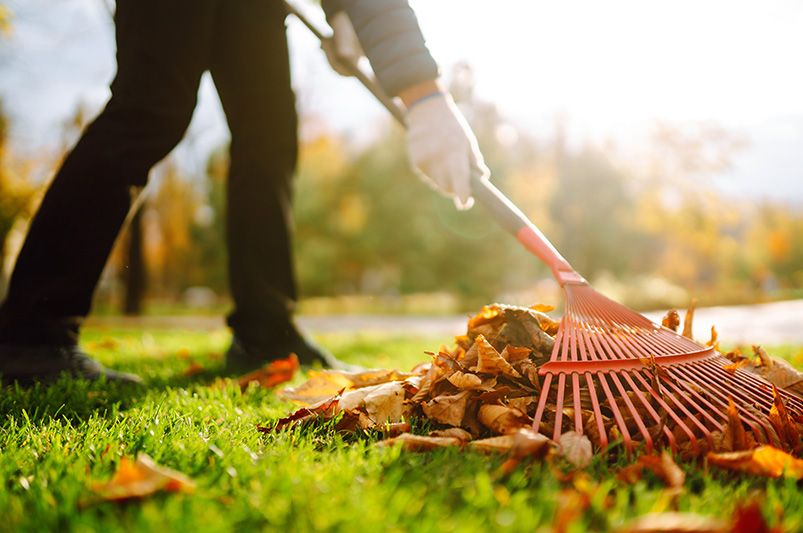
6. Rake and Remove Leaves Regularly
Autumn's charm lies in its vibrant foliage, but as leaves carpet the ground, it's important to protect your lawn from potential damage. A thick layer of fallen leaves can block sunlight, stunting grass growth and creating a breeding ground for diseases.
To safeguard your lawn, regular raking or mowing is essential to allow sunlight to nourish the grass. Consider using a mulching mower to break down leaves into smaller pieces that can decompose and enrich the soil with nutrients. Excess leaves can be composted or used as mulch in flower beds, promoting sustainability and garden health.
Finding a balance between enjoying autumn's beauty and maintaining a healthy lawn is key. By managing fallen leaves effectively, you can preserve the vitality of your outdoor space while embracing the seasonal spectacle.
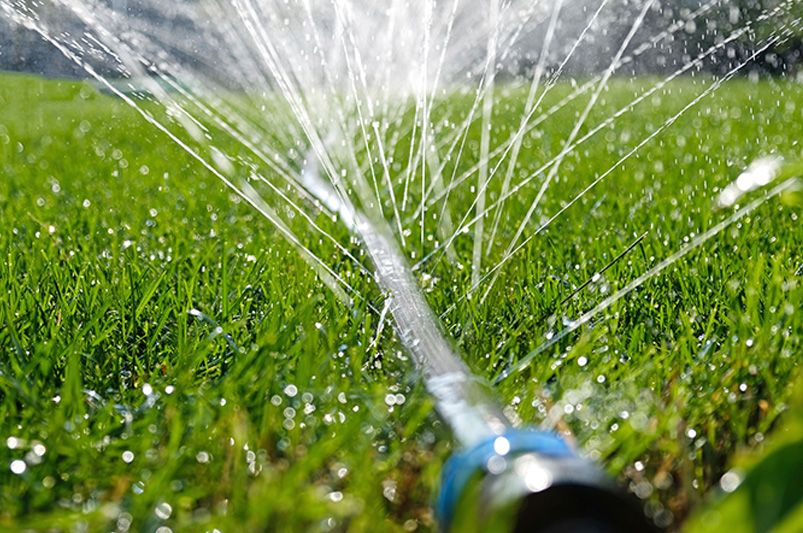
7. Reduce Watering but Don’t Stop Completely
During the winter season, it's essential to adjust your lawn care routine to accommodate the cooler temperatures and reduced sunlight. While your lawn will require less water during this time, it's crucial to ensure that it still receives adequate hydration. Deep watering is key to preventing the roots from drying out, but be mindful not to overwater. The goal is to keep the soil consistently moist, but not waterlogged.
To maintain a healthy winter lawn, water deeply but less frequently. This practice encourages deep root growth and helps the grass withstand colder weather conditions. Keep a close eye on your lawn, especially during dry spells when natural rainfall is scarce.
It's important to note that watering your lawn when temperatures are freezing can have adverse effects. Watering in freezing conditions can lead to the formation of ice on the grass blades and soil, which can damage the turf. It's best to avoid watering when temperatures are below freezing to protect the health of your lawn during winter.
Conclusion
Winter can be a challenging time for maintaining a lush, green lawn, but with the right care, you can ensure your lawn remains healthy and vibrant. In addition to mowing your lawn at the correct height to prevent stress during winter, it is essential to fertilize it appropriately to provide necessary nutrients. Weed control is crucial even in the colder months, as weeds can still thrive and compete with your grass. Consider overseeding bare patches to promote new growth and fill in any sparse areas.
Aeration is another vital step in winter lawn care as it helps improve soil compaction and allows essential nutrients to reach the grassroots. Removing leaves regularly is important not only for aesthetic purposes but also to prevent suffocation of the grass beneath. Adjusting your watering schedule to accommodate for decreased evaporation rates during winter will help maintain proper moisture levels without overwatering.
By preparing your lawn adequately for winter, you are setting the stage for a strong and beautiful resurgence come springtime. These steps will not only enhance the health and appearance of your lawn but also contribute to a picturesque landscape when warmer weather returns. If you have friends or family members who are gardening enthusiasts, sharing these winter lawn care tips on social media can help them achieve stunning results in their own yards.
Frequently Asked Questions
What is the best winter fertilizer for lawns?
When selecting a winter fertilizer for your lawn, it is crucial to choose one that is specifically tailored to your grass type for optimal results. Look for a product that contains a balanced combination of nitrogen, phosphorus, and potassium to support your lawn's health during the colder months. Scotts Turf Builder WinterGuard is a popular choice among homeowners due to its ability to provide essential nutrients for strong root development, ensuring that your lawn remains healthy and vibrant come springtime.
In addition to choosing the right fertilizer, it is essential to follow proper application techniques to maximize its effectiveness. Apply the winter fertilizer evenly across your lawn according to the manufacturer's instructions, paying close attention to dosage and timing. By nourishing your grass with the right nutrients during the winter season, you can promote root growth and strengthen your lawn's resilience against harsh weather conditions. Remember that a well-fed lawn in winter will reward you with lush greenery when the warmer weather returns.
How often should I water my lawn in the winter?
During the winter months, watering requirements for your lawn decrease as the grass goes into dormancy. It's important to monitor the moisture level in the soil and only water when it feels dry to the touch. Avoid watering your lawn when there is frost present, as this can damage the grass and lead to issues with root health. Additionally, adjusting your irrigation schedule to account for cooler temperatures and reduced evaporation rates can help prevent overwatering during the winter season. Proper lawn care during winter ensures that your grass remains healthy and vibrant come springtime.
Can I overseed my lawn in the winter?
Overseeding with cool-season grass, such as ryegrass, is typically done in late fall to ensure optimal growth conditions. Both spring and fall are considered favorable times for overseeding, as the cooler temperatures during these seasons provide an ideal environment for seed germination and establishment. The cooler weather reduces heat stress on the seeds and allows them to thrive without the risk of drying out. Additionally, overseeding in these seasons helps to fill in any bare patches in your lawn, promoting a lush and healthy turf overall. By choosing the right time to overseed and selecting the appropriate grass variety for your region, you can enhance the appearance and resilience of your lawn effectively.
Need Assistance for a Complete Landscape Makeover?
Shrubhub’s landscape design packages can significantly transform the lives of homeowners by delivering customized, professional landscaping plans tailored to their unique space and personal style. With the ease of online collaboration, you are guided step-by-step through a design process that fundamentally reshapes your outdoor environment. The result is an aesthetically pleasing and functional outdoor living area that maximizes the potential of your property.


